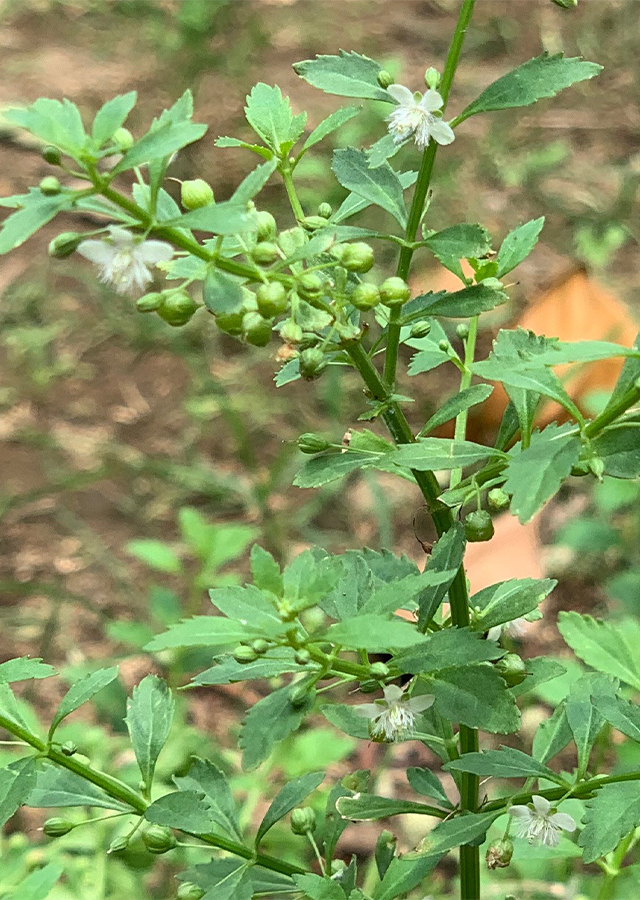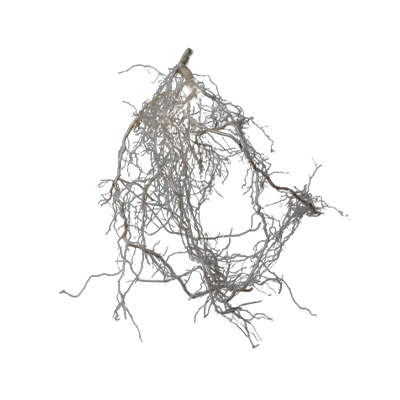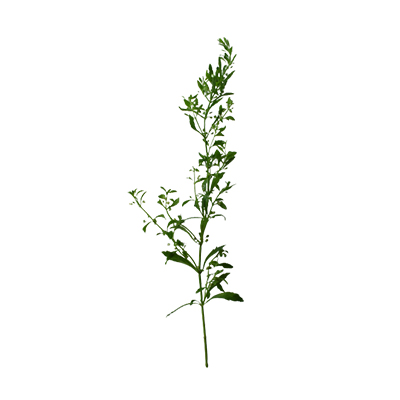Licorice Weed
Scoparia dulcis L.
Plantaginaceae
Location in our garden
Principal



Synonym
Gratiola micrantha Nutt.
Scoparia dulcis var. abrahamii S.N.Pardhesi & Srinivasu
Scoparia fruticosa Rottb.
Habitus
Herbaceous. An erect, perennial, herbaceous, growing 50-100 cm tall
Part Used
The Whole Plant
Growing Requirements
Full Sunshine
Habitat
Shrublands
Grassland
Overview
It is a substantial ethnomedicinal plant which is commonly known as sweet broomweed. This perennial plant widely is distributed in subtropical and tropical regionsof India, Brazil, America, Myanmar and West Indies. In India it is widely use intraditional medicine.
Vernacular Names
Bon-dhonya (Bengali), Mithipatti (Hindi), Seitaka-kanabiki-sô(Japanese), Hibi-hibihan (Philippines), Escobilla (Spanish), Cam thao nam (Vietnamese).
Agroecology
A common weed of lowland, found in areas where it rains all year round and also where there is aprolonged dry season. Succeeds in most soils. This is one of the half dozen commonest weeds of Central America, and may be found almost anywhere in the lowlands. Plants can flower and fruit all year round.
Morphology
- Roots - taproot that may exceed 2 feet inlength with large, shallow lateral roots. Roots are profusely branched.
- Stem - hairy when young and glabrous as theymature.
- Leaves - 3-notely whorled, obovate-oblong to oblanceolate measuring 1.4-3.5 x 0.8 -1.5 cm,subacute at apex, tapering to base and coarsely crenate-serrate from above base andis glabrous on both surfaces
- Flowers - pedicellate, solitary or in pairs, andborne in the axils on 1-year-old stems. Corollais golden yellow, 15-25 mm long.
- Fruits - oblong pods are 2.5-7 cm long and 8-13mm wide, dehiscent, strongly compressed, with brown or white hairs on the margin, otherwise glabrous, green turning to nearly black when mature.
- Seeds - 3-4 mm diameter. Seeds are minute and many.
Cultivation
It is propagated by germinated technique, used seed.
Chemical Constituents
Saponins, glycosides, alkaloids, flavonoids,phenols, terpenoids, tannins, scopadulinactive compounds, scopadulcol, scopadulcicacid, scoparic acid, scoparinol.
Traditional Medicinal Uses
- Plant (fresh or dried) are used as an aid for treatment of kidney stones,stomach ailments, fever, diabetes, hypertension, haemorrhoids, bronchitis,antipyretic, analgesic.
- It is seen as an antibilious, antibiotic, antidote, aphrodisiac, bitter, bloodpurifier, emetic, febrifuge, hepatic, hypoglycaemic and stomachic.
- It relieves pain and urinary tract infections
- In America, it has a very wide range of uses in tropical America where it isused to treat conditions such as digestive problems, pulmonarycomplaints, fevers and skin disorders.
- The roots, leaves and tops are traditionally used in India, Indo-China andSouth-East Asia as an analgesic, diuretic and antipyretic, to treat gastricdisorders such as diarrhoea and dysentery, and also for cough, bronchitis,hypertension, haemorrhoids and insect bites.
- Fresh or dried plants used externally to treat various skin problems such asulcers, bruises, pimples, eczema and impetigo.
- In Brazil, it is used for treating wounds and hemorrhoids.
- The leaves are chewed to treat cough.



